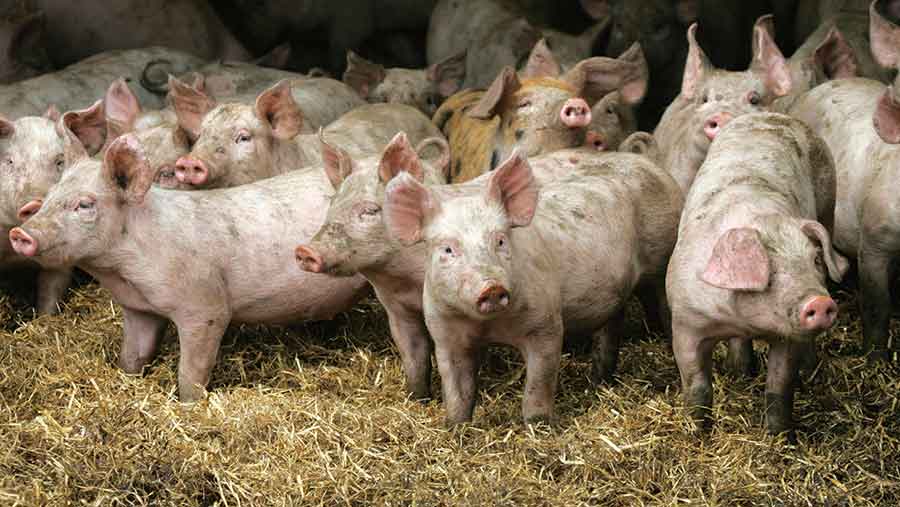Possible zinc oxide ban a massive blow to pig industry
 © Tim Scrivener/Rex/Shutterstock
© Tim Scrivener/Rex/Shutterstock A pending decision to ban therapeutic zinc oxide in pig feed will “shock” the UK pig industry if passed by the European Medicines Authority (EMA) and cost farms on health, welfare, finance and production grounds.
This is according to industry experts left dumbfounded by the EMA’s Committee on Veterinary Medicinal Products (CVMP) to ban the medicine on the “benefit-risk” balance of zinc oxide effects to the environment.
Used in preventing post weaning diarrhoea since 1994, high purity zinc oxide has been hailed as a hugely successful medicine that has dramatically reduced growth checks, illness and hygiene issues in month-old pigs.
See also: Legalising pig swill
Without therapeutic zinc oxide, the other main alternatives are antibiotics, in particular colistin, an old drug designated a “drug of last resort” by the World Health Organisation.
The National Pig Association described the decision as coming “out of the blue” after France and the Netherlands voiced environmental concerns to the EMA.
A complicating factor is that zinc oxide has been linked to increasing antibiotic resistance by a publically criticised piece of research which implicated zinc oxide as a co-selector for MRSA.
“We would like to see the evidence to support the announcement,” said Zoe Davies, chief executive of the NPA, which on Thursday (15 December) outlined its concerns to the Veterinary Medicines Directorate.
The NPA maintained there was “insufficient evidence” on zinc oxide contributing to antimicrobial resistance (as a co-selector) and that “in all previous assessments the CVMP has found the benefits of its effective use outweigh the environmental risks”.
Regulatory affairs consultant David Pickard, who is assembling a case to challenge EMA opinion on behalf of the UK licence holders (DSM, Provimi), forsees several campaigns to keep zinc oxide in pig diets.
He said that, if passed, the CVMP opinion could see zinc oxide banned within a short space of time.
“The current time scale is uncertain because a number of administrative issues are not clear,” Mr Pickard told Farmers Weekly. However, he added, “We will be contacting the EMA immediately and we have some time available to prepare data submissions”.
Mr Pickard said the case for zinc oxide will be supported on two main fronts:
- The benefit to risk balance for animal welfare and environmental impact.
- The benefit to risk balance for alternatives; principally at this time antibiotics (aminoglycosides, neomycin and apramcycin – all critically important antibiotics), which could have detrimental impacts on trying to stem the tide of antimicrobial resistance.
Benefits
Zinc oxide in creep feed is “highly effective” at minimising post weaning diarrhoea, according to animal health consultant David Burch, Octagon Services.
He told Farmers Weekly the implications of a ban could hinder the pig industry’s efforts to reduce antibiotic use and force farms to wean two weeks later.
Dr Burch said: “To lose it will cause several problems ranging from minor to severe depending on the farm and possibly the season of the year.”
Summarising the benefits of zinc, he said around 80-90% of conventional pig systems were believed to creep feed zinc oxide at a maximum rate of 3.1kg/t for therapeutic use.
A delay in weaning of two weeks would require 50% more farrowing accommodation and on a 450-sow farrowing unit means £100,000 in extra sow places s at £2,500 a space and 20 sows farrowed/week, he explained.
Environmental risk
AHDB Pork’s Nigel Penlington said concerns over the potential danger of zinc to the soils appeared to be based on a “historical perception”.
“Concerns appear to relate to when unregulated usage and higher rates of slurry application were used,” he told Farmers Weekly.
Current knowledge of crop nutrient uptakes and control through Nitrate Vulnerable Zones, mean there is less pressure on the land, he added.
“There are also fewer pigs in the country and its important to remember that quantities of zinc in feed are small because they are used in a narrow window when solid feed intake is starting.
“It can be more of an issue on farms just taking weaners but farrow-to-finish units dilute the zinc with other slurries.”
Against the zinc oxide ban
- The NPA has requested a meeting early January with the VMD and other bodies equally concerned at the prospect of a ban (Pig Veterinary Society, Responsible Use of Medicines in Agriculture, Agricultural Industries Confederation, Pig Health and Welfare Council).
- Therapeutic use: 2,500 ppm zinc; 3,100ppm zinc oxide. For E coli infections.
- Nutritional use: Zinc is an essential trace element and currently permitted up to 150ppm in the EU.

